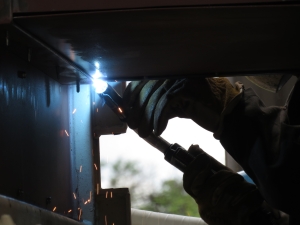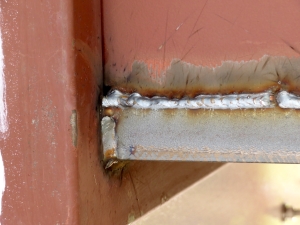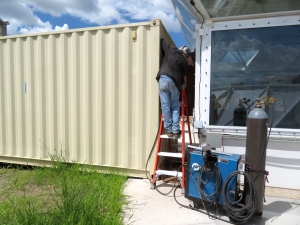As we are constructing SAM from three exiting structures (the original Biosphere 2 Test Module (TM), a 20′ and a 40′ shipping container) no two interfaces between these units is identical. Rather, each is an experiment in design where the corridor must be ridged to support the weight of a human passing inside, protected from the elements so as not to rust or degrade over time, and attached on both ends so as to maintain a pressurized seal between dissimilar materials.
We learned a great deal in the study of the TM. The 5’x5′ windows are held in a steel frame which itself it bolted to the TM. A 3/4 inch channel between the inside of the window frames and the steel frame of the TM is filled with 795 silicon to provide a pressure seal and low-permeability gas release over time. This system has remained untouched for more than 30 years and remains 100% sealed, even flexible to the touch. It was our intent to duplicate this method for all interfaces, however, we determined that the effort would result in more welding overall than simply welding the interfaces themselves.
As such, we asked James Parker, Supervisor of the University of Arizona Metal Shop to let us know when his team could give us a full day at SAM. On August 18 Charlie and Steven applied their expertise, successfully welding the side walls, tops and bottoms of the corridor between the Test Module and 20′ container, and between the 20′ and 40′ containers. Kai removed the insulation from the exterior prior to the welding team arrival, and when complete (and cool to the touch) applied a coat of primer to the exposed areas, then replaced the insulation sheets.





